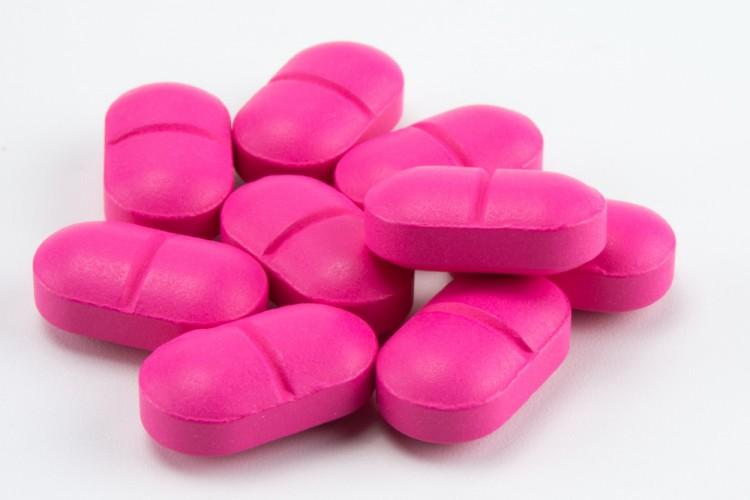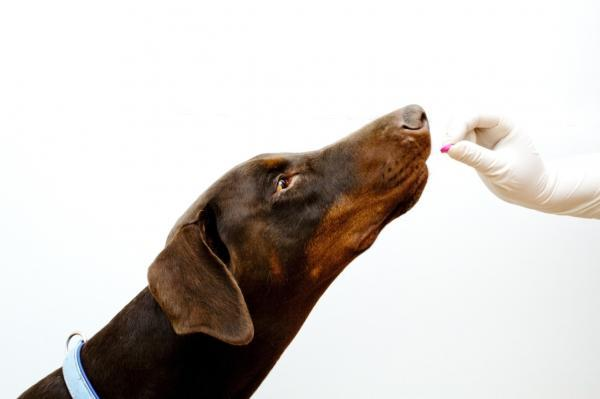
Many dog owners are surprised when they find their pup suffers from allergies. Dogs can be allergic to many things including insects, pollen, grass, other animals and for the very unfortunate dog, even dog hair. While a dog that is allergic to itself requires more extensive treatments such as shaving, most dogs with allergies are lucky to only have mild or seasonal allergies, which can be treated with common antihistamines.
While there are several allergy medications on the market specifically formulated for dogs, it is common for Veterinarians to recommend the well-known over-the-counter drug, Benadryl.
I know what you’re thinking: Isn’t Benadryl for humans?
Yes. But with the correct dosage under the supervision and guidance of a Vet, Benadryl is completely safe for dogs. Not to mention, it is less expensive than most allergy medications for dogs, as well as convenient, as you can just pick up a bottle from your local pharmacy or supermarket-no prescription required.
What is Benadryl for?
Benadryl is an antihistamine containing the active ingredient diphenhydramine, which is safe for dogs to consume. Benadryl blocks the H-1 receptors of the blood vessels and reduces the amount of the chemical histamine in the dog’s body.
When to use Benadryl
Benadryl may be prescribed by your Veterinarian to treat seasonal and environmental allergies, insect bites and stings, mild to moderate allergic reactions, and as a post-treatment before vaccines in case of a reaction. It can reduce the effects of a runny nose, itchy eyes or skin, sneezing and rashes.



Other uses of Benadryl for Dogs
Benadryl is often used to ease the symptoms of motion sickness while traveling. It can also be used for anxiety and insomnia, which can be helpful during traveling or other situations that may be stressful for dogs, as the sedative effects of the drug can help to calm the animal so it can rest or sleep. Benadryl is sometimes used as a supplemental medication for dogs with heartworms, as it can help to reduce the risk of the animal having an allergic reaction to the heartworm medication. Another less common, but effective use for Benadryl is for dogs that have mast cell tumors. Usually these tumors release a high amount of histamine in dogs due to the mast cell degranulation. The antihistamine in the Benadryl reduces the effects of the histamine and allows the dog to be more comfortable.
Dosage
The correct dosage for Benadryl depends on a dog’s weight. The most common dosage of Benadryl for dogs is 1mg of Benadryl per pound. Usually this dose is given 2-3 times a day until symptoms subside. Always check with a Veterinarian to make sure you’re giving the appropriate dosage for your pet.
Side Effects
When taking Benadryl, your dog may experience several side effects. Drowsiness is the most common side effect, which will generally subside within a few hours. Less common side effects include disorientation, dry mouth, allergic reaction, vomiting, diarrhea, lack of appetite, heavy breathing, rapid heart rate, agitation or urinary retention.
As with any new medication, make sure to observe your dog for any side effects or reactions to the Benadryl. When administered correctly, Benadryl is generally safe for dogs and severe adverse reactions to the drug are uncommon.
When to avoid using Benadryl for your Dog
There are a few medical conditions that may make Benadryl unsafe as a treatment for your dog’s allergies. Giving Benadryl to a dog suffering from Glaucoma could actually worsen the dog’s condition. Dogs with high blood pressure, hypothyroidism or cardiovascular disease should not take Benadryl. If your dog is taking other medications, it’s a good idea to check with your Vet for any contraindications.
Never give your dog Benadryl without first consulting your Vet to make sure it is the appropriate treatment. Sometimes symptoms may indicate a more serious condition that would require further treatment. For example, red, itchy eyes may seem like allergies but could actually be an indication of something more serious like an eye disease. Itchy skin could be due to a number of skin conditions other than allergies. If your dog is exhibiting severe symptoms such as swelling or difficulty breathing, this could be an acute allergic reaction, which requires immediate medical attention.
Never give a young puppy Benadryl without consulting a professional first. Just like babies, puppies can be much more sensitive to medications.
Avoid giving liquid Benadryl or Benadryl which contains sodium (such as children’s versions) or another drug (such as Tylenol) to your dog as these versions of the drug could have more side effects.
Benadryl is generally a safe way to treat a dog’s seasonal allergies or allergic reactions. It can also be used as a sedative or to treat motion sickness. However, it’s important to make sure you’ve consulted your Veterinarian before reaching into the medicine cabinet to find medication to treat your dog. With the supervision of a professional, Benadryl can be a convenient, budget-friendly and safe solution for your dog’s allergies.